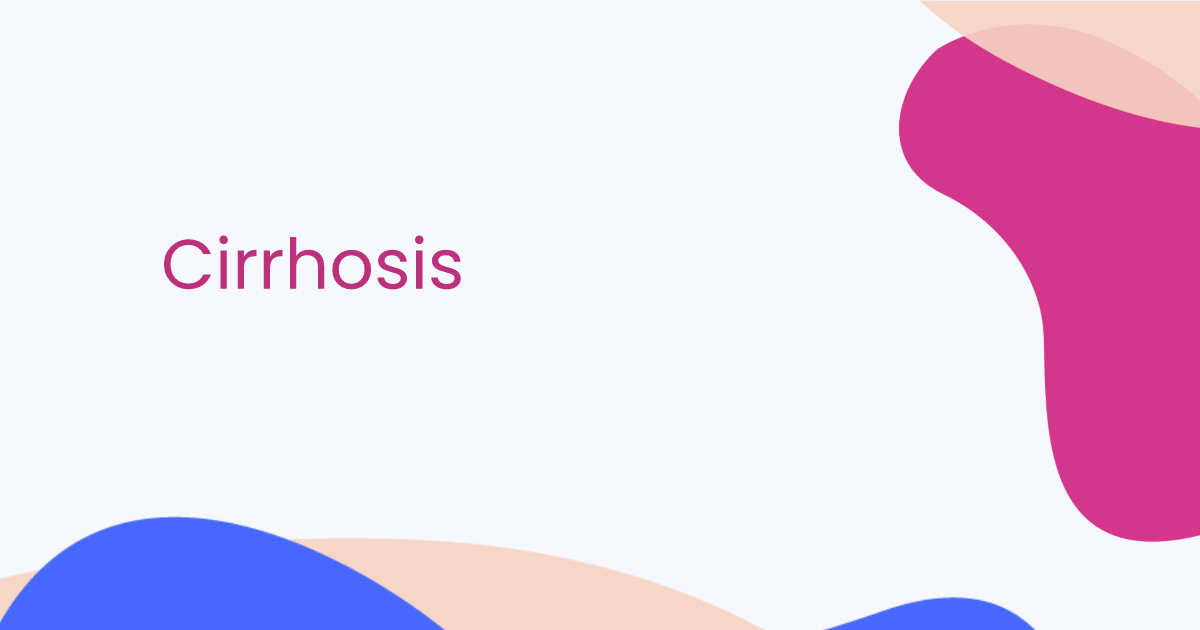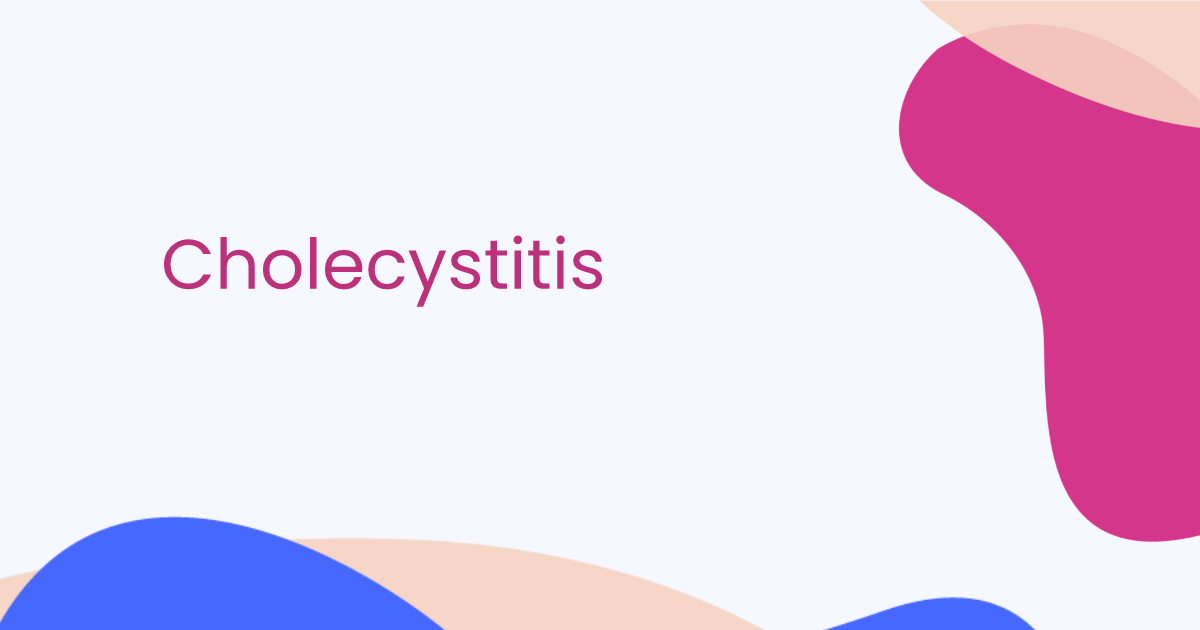Primär sklerosierende Cholangitis
Begutachtet von Dr. Doug McKechnie, MRCGPZuletzt aktualisiert von Dr. Colin Tidy, MRCGPZuletzt aktualisiert am 6. März 2025
Erfüllt die Anforderungen des Patienten redaktionelle Richtlinien
- HerunterladenHerunterladen
- Teilen Sie
- Sprache
- Diskussion
Die primär sklerosierende Cholangitis ist eine seltene Erkrankung der Gallenwege und der Leber. Die Entzündung und Vernarbung der Gallengänge kann zu Leberschäden und Leberzirrhose führen - ein Zustand, bei dem normales Lebergewebe durch Narbengewebe (Fibrose) ersetzt wird. Es stehen verschiedene Behandlungen zur Verfügung, um die möglicherweise auftretenden Symptome zu kontrollieren und eventuelle Komplikationen in den Griff zu bekommen. Die Aussichten für Menschen mit primär sklerosierender Cholangitis können sehr unterschiedlich sein.
In diesem Artikel:
Leberfunktion

Die Leber befindet sich im oberen rechten Teil des Bauches (Abdomen). Sie hat viele Funktionen, darunter:
Speicherung von Glykogen (Brennstoff für den Körper), das aus Zuckern hergestellt wird. Bei Bedarf wird Glykogen zu Glukose abgebaut, die in den Blutkreislauf abgegeben wird.
Hilfe bei der Verarbeitung von Fetten und Proteinen aus der verdauten Nahrung.
Herstellung von Proteinen, die für die Blutgerinnung wichtig sind (Gerinnungsfaktoren).
Verarbeitung vieler Medikamente, die Sie einnehmen können.
Hilfe bei der Entfernung oder Verarbeitung von Alkohol, Giften und Toxinen aus dem Körper.
Herstellung von Galle, die von der Leber über den Gallengang in den Darm gelangt. Die Galle spaltet die Fette in der Nahrung auf, damit sie vom Darm aufgenommen werden können.
Oberbauch mit Gallengängen

Galle ist eine gelb-grüne Flüssigkeit, die verschiedene Chemikalien und Gallensalze enthält. Die Galle hilft bei der Verdauung von Lebensmitteln, insbesondere von fettigen Lebensmitteln. Außerdem hilft sie dem Körper, bestimmte Vitamine (A, D, E und K) aus der Nahrung aufzunehmen.
Galle wird von Leberzellen hergestellt. Die Leberzellen leiten die Galle in ein Netz winziger Röhren, die Gallengänge, ab. Sie vereinigen sich (wie Nebenflüsse eines Flusses) und bilden den größeren Hauptgallengang. Die Galle tropft ständig die winzigen Gallengänge hinunter, in den Hauptgallengang und in den ersten Teil des Dünndarms (den Zwölffingerdarm).
Die Gallenblase liegt unter der Leber. Sie ist wie ein Beutel des Hauptgallengangs und füllt sich mit Galle. Sie ist wie ein Reservoir, das Galle speichert. Die Gallenblase drückt (zieht sich zusammen), wenn wir essen, da die Galle für die Verdauung benötigt wird. Dadurch entleert sich die gespeicherte Galle zurück in den Hauptgallengang und in den Zwölffingerdarm.
Lesen Sie unten weiter
Was ist primär sklerosierende Cholangitis?
Die primär sklerosierende Cholangitis (PSC) ist eine seltene Erkrankung, die die Gallengänge und die Leber betrifft. Die PSC kann in jedem Alter auftreten, tritt aber häufiger bei Menschen um die 40 auf. Sie ist bei Männern doppelt so häufig wie bei Frauen. PSC wird genannt:
Primär - weil die Ursache nicht bekannt ist. (Das heißt, sie ist nicht "sekundär" zu einer bekannten Ursache wie Alkohol oder Giften.)
Sklerosierung - weil es zur Vernarbung und Verdickung (Sklerose) der Gallengänge führt.
Cholangitis - das bedeutet eine Entzündung der Gallengänge.
Bei dieser Erkrankung entzünden sich die Gallengänge sowohl innerhalb als auch außerhalb der Leber und vernarben. Die Vernarbung führt zu einer Verengung dieser Gallengänge, wodurch sich die Galle in der Leber staut. Die Galle kann dann die Leberzellen schädigen. Schließlich kann sich das Narbengewebe in der gesamten Leber ausbreiten und zu Zirrhose und Leberversagen führen. Zirrhose ist eine ernste Erkrankung, bei der das normale Lebergewebe durch Narbengewebe (Fibrose) ersetzt wird. Sie schreitet in der Regel langsam voran und verursacht im Anfangsstadium oft keine Symptome. Wenn sich die Funktion der Leber jedoch allmählich verschlechtert, können sich ernste Probleme entwickeln.
Weitere Einzelheitenfinden Sie in der separaten Broschüre Zirrhose.
Symptome der primär sklerosierenden Cholangitis
In vielen Fällen entwickeln sich die Symptome allmählich über Wochen oder Monate. Zu Beginn der Krankheit haben viele Menschen überhaupt keine Symptome. Zu den häufigsten Frühsymptomen gehören:
Ich fühle mich noch müder als sonst.
Sie fühlen sich allgemein unwohl.
Juckende Haut.
Gewichtsverlust.
Unwohlsein im rechten Oberbauch (Abdomen).
Gelbsucht ist ein Symptom der PSC, wenn sich der Zustand verschlimmert. Wenn Sie Gelbsucht haben, werden Sie "gelb". Man merkt es in der Regel zuerst, wenn das Weiße der Augen gelb wird. Dies ist auf eine Anhäufung des chemischen Stoffes Bilirubin zurückzuführen, der in der Leber gebildet wird und bei manchen Lebererkrankungen ins Blut übergeht.
Lesen Sie unten weiter
Primär sklerosierende Cholangitis Ursachen
Die Ursache ist unklar. Sie kann manchmal in der Familie vorkommen. Etwa vier von fünf Menschen mit PSC haben auch eine entzündliche Darmerkrankung (am häufigsten Colitis ulcerosa, sie kann aber auch mit Morbus Crohn assoziiert sein). Etwa 1 von 10 Menschen mit entzündlichen Darmerkrankungen ist von PSC betroffen.
Behandlung der primär sklerosierenden Cholangitis
Gegenwärtig gibt es keine spezifische Behandlung für PSC, die die Krankheit heilt oder ihr Fortschreiten verlangsamt. Die Behandlungen zielen darauf ab, die Symptome zu verbessern und eventuell auftretende Komplikationen zu beherrschen.
Behandlung der Symptome. Der Juckreiz der Haut kann schwierig zu behandeln sein, wird aber in der Regel mit einem Medikament namens Colestyramin gelindert. Wenn dies nicht wirksam ist, können andere Arzneimittel ausprobiert werden.
Medizinische Behandlung. Obwohl Vitaminpräparate empfohlen werden können, gibt es keine erwiesene medizinische Behandlung, die das Fortschreiten oder den Ausgang der PSC verändert. Ursodeoxycholsäure (UCDA) wird häufig eingesetzt und kann nachweislich die Leberfunktion verbessern, doch haben klinische Studien keinen Nutzen hinsichtlich einer Verbesserung der Ergebnisse gezeigt.
Behandlung von Komplikationen. Bei einer infektiösen Cholangitiswerden Antibiotika verabreicht. Wenn das Cholangiogramm zeigt, dass der Gallengang außerhalb der Leber verstopft ist, kann der Arzt einen kleinen Drainageschlauch (Stent) einsetzen oder einen sehr kleinen Ballon verwenden, um die Verstopfung zu lösen.
Lebertransplantation. Eine Lebertransplantation ist die einzige Behandlung, die die Aussichten der Krankheit verändern kann. Sie kann in Betracht gezogen werden, wennIhre Leber stark geschädigt ist. Die Aussichten nach einer Lebertransplantation sind gut. Allerdings tritt die PSC in etwa einem Fünftel der Fälle nach einer Lebertransplantation erneut auf.
Ernährung und Alkohol. Den meisten Menschen mit PSC wird geraten, sich normal und gesund zu ernähren. Idealerweise sollten Menschen mit einer Leberentzündung keinen Alkohol oder nur sehr geringe Mengen davon trinken. Wenn Sie bereits eine Leberentzündung haben, kann Alkohol das Risiko und die Geschwindigkeit der Entwicklung einer Leberzirrhose erhöhen, bei der das normale Lebergewebe durch Narbengewebe (Fibrose) ersetzt wird.
Lesen Sie unten weiter
Welche Komplikationen gibt es?
Bei manchen Menschen mit PSC können verschiedene Komplikationen auftreten. Dazu gehören:
Mangel an bestimmten Vitaminen, in der Regel an den Vitaminen A, D, E und K. Dies sind die fettlöslichen Vitamine (im Gegensatz zu den anderen Vitaminen, die wasserlöslich sind). Das heißt, sie lösen sich in Fett auf. Die Galle trägt dazu bei, dass das Fett aufgespalten wird und diese Vitamine aufgenommen werden können.
PSC-Cholangitis, d. h. eine Infektion der blockierten Gallengänge. Dies wird als infektiöse Cholangitis bezeichnet. Sie kann Schüttelfrost, Fieber und Druckempfindlichkeit im Oberbauch (Abdomen) verursachen.
Zirrhose - bei der das normale Lebergewebe durch Narbengewebe (Fibrose) ersetzt wird.
Leberversagen.
Gallengangskrebs. Davon ist schließlich etwa 1 von 10 PSC-Patienten betroffen.
Diagnose der primär sklerosierenden Cholangitis
Viele Menschen mit PSC haben in den frühen Stadien der Krankheit lange Zeit keine oder nur vage Symptome. Daher wird die Diagnose oft erst bei Untersuchungen auf eine andere Erkrankung oder bei Routineuntersuchungen auf eine entzündliche Darmerkrankung gestellt.
Die Tests umfassen in der Regel:
Blutuntersuchungen, so genannte Leberfunktionstests. Diese messen die Aktivität von Chemikalien (Enzymen) und anderen Substanzen, die in der Leber gebildet werden. Dies gibt einen allgemeinen Hinweis darauf, ob die Leber entzündet ist und wie gut sie arbeitet. Weitere Informationen finden Sie in der separaten Packungsbeilage "Anormale Leberfunktionstests".
Weitere Bluttests können durchgeführt werden, um andere Ursachen für Lebererkrankungen, wie z. B. eine Virushepatitis, auszuschließen.
Es kann eine Ultraschalluntersuchung der Leber durchgeführt werden.
Ein Cholangiogramm ist eine Untersuchung, bei der ein Bild der Gallengänge erstellt wird. Dies geschieht häufig mit Hilfe einer Magnetresonanztomographie (MRT).
Entnahme einer kleinen Probe (Biopsie) aus der Leber. Diese kann durchgeführt werden, um die Probe unter dem Mikroskop zu betrachten. Dabei können Entzündungen und das Ausmaß einer eventuellen Zirrhose (bei der normales Lebergewebe durch Narbengewebe (Fibrose) in der Leber ersetzt wird) festgestellt werden. Anhand der Leberbiopsie kann auch festgestellt werden, wie früh oder weit fortgeschritten die Krankheit ist. Weitere Informationen finden Sie im separaten Merkblatt Leberbiopsie.
Verändert die primär sklerosierende Cholangitis die Lebenserwartung?
Der Verlauf der PSC ist unterschiedlich. Die Aussichten und die Lebenserwartung sind bei älteren Patienten, bei Patienten mit vergrößerter Leber und Milz und bei Patienten mit anhaltender Gelbsucht schlechter. Es besteht auch ein erhöhtes Risiko, an Gallengangskrebs (Cholangiokarzinom) oder Darmkrebs (kolorektales Karzinom) zu erkranken. Das Risiko, an Darmkrebs zu erkranken, ist bei Menschen mit PSC höher, die auch an Colitis ulcerosa leiden.
Abgesehen von einer Lebertransplantation gibt es keine wirksamen Behandlungsmöglichkeiten für PSC. Einigen US-amerikanischen Studien zufolge liegt die Lebenserwartung zwischen 9 und 18 Jahren, wenn der Patient keine Lebertransplantation erhält. Forscher in den Niederlanden kamen jedoch zu dem Schluss, dass die Lebenserwartung ab dem Zeitpunkt der Diagnosestellung mehr als 21 Jahre betragen kann.
Die Behandlung der PSC ist ein sich entwickelnder Bereich der Medizin. Es werden weiterhin neue Behandlungsmethoden erforscht, und die obigen Informationen sind sehr allgemein gehalten. Der Spezialist, der Ihren Fall kennt, kann genauere Informationen über die Aussichten in Ihrer speziellen Situation geben.
Patient picks for Liver and gallbladder

Gesundheit der Verdauung
Zirrhose
Cirrhosis is a serious condition where normal liver tissue is replaced by scar tissue (fibrosis). It tends to progress slowly and often does not cause symptoms in its early stages. However, as the function of the liver gradually becomes worse, serious problems can develop. In the UK, the two commonest causes of cirrhosis are alcohol drinking above recommended limits and hepatitis C infection. Treatments may vary, depending on the cause. If cirrhosis becomes severe, a liver transplant may be the only option.
von Dr. Philippa Vincent, MRCGP

Gesundheit der Verdauung
Cholezystitis
Cholezystitis ist ein schmerzhafter Zustand, der durch eine entzündete Gallenblase verursacht wird. Die häufigste Ursache sind Gallensteine.
von Dr. Doug McKechnie, MRCGP
Weiterführende Literatur und Referenzen
- Nicoletti A, Maurice JB, Thorburn DÜberprüfung der Leitlinie: Leitlinien der British Society of Gastroenterology/UK-PSC für die Diagnose und Behandlung der primär sklerosierenden Cholangitis. Frontline Gastroenterol. 2020 Mar 2;12(1):62-66. doi: 10.1136/flgastro-2019-101343. eCollection 2021.
- EASL-Leitlinien für die klinische Praxis zur sklerosierenden Cholangitis. J Hepatol. 2022 Sep;77(3):761-806. Epub 2022 Jun 21.
- Tan N, Lubel J, Kemp W, et alAktuelle Therapeutika bei primär sklerosierender Cholangitis. J Clin Transl Hepatol. 2023 Oct 28;11(5):1267-1281. doi: 10.14218/JCTH.2022.00068S. Epub 2023 Apr 17.
- Sarcognato S, Sacchi D, Grillo F, et alAutoimmunerkrankungen der Gallenwege: primäre biliäre Cholangitis und primäre sklerosierende Cholangitis. Pathologica. 2021 Jun;113(3):170-184. doi: 10.32074/1591-951X-245.
Lesen Sie unten weiter
Artikel Geschichte
Die Informationen auf dieser Seite wurden von qualifizierten Klinikern verfasst und von Fachleuten geprüft.
Nächste Überprüfung fällig: 5. März 2028
6. März 2025 | Neueste Version

Fragen, teilen, verbinden.
Stöbern Sie in Diskussionen, stellen Sie Fragen, und tauschen Sie Erfahrungen zu Hunderten von Gesundheitsthemen aus.

Fühlen Sie sich unwohl?
Beurteilen Sie Ihre Symptome online und kostenlos
Sign up to the Patient newsletter
Your weekly dose of clear, trustworthy health advice - written to help you feel informed, confident and in control.
By subscribing you accept our Privacy Policy. You can unsubscribe at any time. We never sell your data.